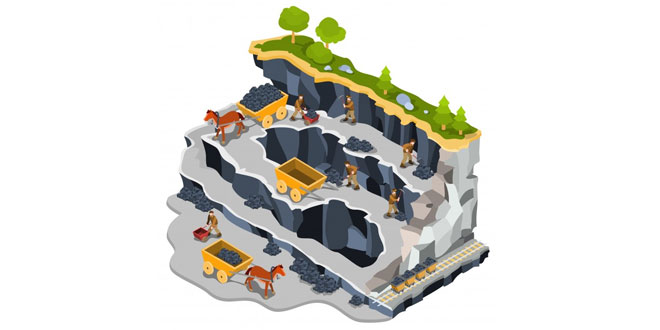Question: What is Anthracite?
Answer: Anthracite is the highest quality of hard coal.
Question: List four non-conventional energy resources.
Answer: Solar energy, wind power, bio gas and geothermal energy are non-conventional energy resources.
Question: Suggest two ways of conserving minerals.
Answer: Recycling of metals and discovering new substitutes for metals are ways of conserving minerals.
Question: Name two non-metallic minerals.
Answer: Mica and marble are non- metallic minerals.
Question: What is commercial and non-commercial energy
Answer:
Commercial Energy: The sources of energy which are used by the people for commercial purposes. The use of commercial source of energy can be used as an indicator of economic development of the country. Coal, petroleum, natural gas, hydro-electricity are the major commercial sources of energy.
Non- Commercial Energy: The sources of energy which are used by the people for home consumption. The use of non-commercial source of energy can be used an indicator of living standard of the country. Fire wood, charcoal, cow-dung and agriculture waste are the major non-commercial sources of energy.
Question: Write a brief note on conventional and non-conventional sources of energy.
Answer:
Conventional Sources of Energy: Conventional source of energy have been used since the early times. Coal, Petroleum, natural gas, hydro-electricity, thermal power are the source of energy. All conventional sources of energy except hydro-electricity are exhaustible. These source cause environmental pollution. These source require huge capital.
Non-Conventional Sources of Energy: Non- conventional source of energy have came into the use only recently. Wind energy, solar energy, tidal energy, geothermal, bio gas are example of these source of energy. Most of the non- conventional sources of energy are inexhaustible. These sources do not cause environmental pollution. Small amount of money is sufficient to have these sources.
Question: Distinguish between the following
- Ferrous and non-ferrous minerals
- Conventional and non-conventional sources of energy
Answer:
(1).Ferrous Minerals: Ferrous minerals account for about three fourths of the total value of the production of metallic minerals. They provide a strong base for the development of metallurgical industries. India exports substantial quantities of ferrous minerals after meeting her internal demands.
Non-ferrous Minerals: India’s reserves and production of non- ferrous minerals is not very satisfactory. However, these minerals, which include copper, bauxite, lead, zinc and gold, play a vital role in a number of metallurgical, engineering and electrical industries. Let us study the distribution of copper and bauxite.
(2). Conventional Sources of Energy:
- Conventional source of energy have been used since the early times.
- Coal, Petroleum, natural gas, hydro-electricity, thermal power are the source of energy.
- All conventional sources of energy except hydro-electricity are exhaustible.
- These source cause environmental pollution.
- These source require huge capital.
Non-Conventional Sources of Energy:
- Non- conventional source of energy have came into the use only recently.
- Wind energy, solar energy, tidal energy, geothermal, bio gas are example of these source of energy.
- Most of the non- conventional sources of energy are inexhaustible.
- These sources do not cause environmental pollution.
- Small amount of money is sufficient to have these sources.
Question: What is a mineral?
Answer: Geologists define a mineral as a “homogeneous, naturally occurring substance with a definable internal structure.” Minerals are found in varied forms in nature, ranging from the hardest diamond to the softest one. Minerals are an indispensable part of our lives. Almost everything we use, from a tiny pin to a towering building or a big ship, all are made from minerals. The railway lines and the tarmac (paving) of the roads, our implements and machinery too are made from minerals. Cars, buses, trains, aeroplanes are manufactured from minerals and run on power resources derived from the earth. Even the food that we eat contains minerals. In all stages of development, human beings have used minerals for their livelihood, decoration, festivities, religious and ceremonial rites.
Question: How are minerals formed in igneous and metamorphic rocks?
Answer: In igneous and metamorphic rocks, minerals may occur in the cracks, crevices, faults or joints. The smaller occurrences are called veins and the larger are called lodes. In most cases, they are formed when minerals in liquid, molten and gaseous forms are forced upward through cavities towards the earth’s surface. They cool and solidify as they rise. Major metallic minerals like tin, copper, zinc and lead etc. are obtained from veins and lodes.
 Class Notes NCERT Solutions for CBSE Students
Class Notes NCERT Solutions for CBSE Students





